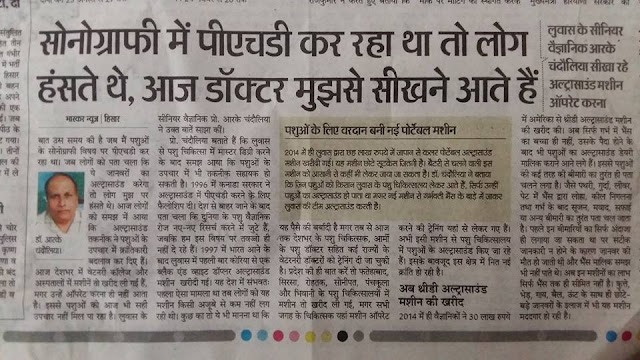“Multi-OS Installation
Workshop” is On 3rd And 4th Of October, ( Saturday and Sunday ).
Venue :
“SunBeam” C Bldg
Fees : Rs-1500/- including service tax
Time :
Saturday 3rd Oct : 2 pm to 8.15 pm , Sunday 4th Oct : 11
am to 8.15 pm
Speaker
Details : Dr.Vijay Gokhale Sir. He has been conducting this workshop for
last 10 years .His practical experience & eminent style of teaching has
made this workshop highly successful & popular in student community.
Process
of Payments & Registration: Students of Sunbeam’s
full time courses needs to register by signing registration sheet available
with their group leaders. Rs.1500 will be deducted from caution deposit. Last
date of registration is Tuesday 29th Sept 2015. Other students need to register online on sunbeam
website & pay in ICICI Bank. There are limited seats & admissions are
on First Come First Serve Basis.
Please Read The Following
Carefully To Avoid Misunderstandings And Losses :
==========================================================
[ Please be patient while
reading this content. I assure, you will not regret ]
This “Multi-OS
Installation Workshop” is not only about installing 9 Operating Systems on
1 machine but about many other things like :
01) Why : Necessity/Benefits,
02) BIOS With Respect To OS Installation,
03) EMT64/i386/x86/IA64/x64/x86_64 Terminology.
04) EFI/UEFI,
05) Boot Sector With Respect To OS Installation,
06) MBR/EPBR,
07) Partition Table,
08) MBR Partitioning Scheme,
09) GUID Partition Table (GPT) Partitioning Scheme, Supported OSs
10) Disk Cylinder/Head/Sector/LBA/LVM,
11) Partitioning Commands, Tools,
12) Capacities And Limitations Of Hard Disks,
13) Booting ( Live CD/LiveUSB )
14) Seven Boot Loaders And Ram-Disks.
15) GRUB/NLDR Tweaking, Chain-loading, Configurations And Installations,
16) File Systems And Their Identifiers,
17) Quick Format And Low Level Or “0” Level Format Of Disks,
18) Specialities Of Operating Systems With Respect To Their Order Of
Installations,
19) Flavours/Distros Of Unix/Linux.
20) ACPI Tables/DSDT/SSDT/BUS Ratio,
21) System Files Of All 9 Operating Systems,
22) Types Of GUIs,
23) Linux And Other OS Terminology Of Disk,
24) Mounting,
25) GRUB2 Configuration,
26) Hibernation Of New Windows OS,
27) MBR/NTLDR/BoottMGR/GRUB/GPT Troubleshooting Commands.
28) Virtualisation – Concepts, Types, Examples.
29) Emulator/Simulator Difference And Examples.
30) Apple Mac OS X : Macintosh/Hackintosh,
Following 9 Operating Systems will be used for installations :
[ I will tell you why I particularly chose these 9 OS ]
7 for native installation + 2 for virtual machine installation (
VirtualBox )
01) Microsoft Windows 7 – 32 Bit
02) Open Solaris – 64 Bit
03) PC-BSD – 64 Bit
04) Microsoft Windows 8.1 – 64 Bit
05) Open SuSE Linux – 64 Bit
06) Red Hat Fedora Core – 64 Bit
07) Apple Mac OS X – 64 Bit
08) Ubuntu – 64 Bit
09) Microsoft Windows 2012 Server – 64 Bit
* DEMOS :
=========
At the end of workshop there will be DEMOS of my Mult-OS laptop and
applications :
[ Few attend this workshop again-and-again just to see this ]
Rarely seen OSs :
~~~~~~~~~~~~~~~~~
Which are “unthinkable” for many people to have on laptop
01) MS-DOS 6.22
02) Windows 3.1
03) SCO UnixWare ( The actual PC Unix )
04) Novel Netware
05) Full featured Mac OS X without Mac
OpenGL-CUDA Demos : “Graphics Programming of Realism”
~~~~~~~~~~~~~~~~~~~
Something that IT people say “impossible” for one person to do.
* Prerequisites :
=================
– Brain with full of whys and hows about computers.
– Mind with passion and patience of learning.
– A notebook and a pen.
– It is recommended but not must to have “Computer Fundamentals Workshop”
already attended.
* Notes/CDs/DVDs :
==================
Installation notes with few CD/DVDs will be provided to you
* What it is NOT about :
========================
– Network Installation/Administration ( PXE Boot ) :
Topic of a separate workshop.
– Post-OS Troubleshooting :
So many troubles are there and you can not make everybody happy at all times.
Although some vital tips are given in workshop.
– Laptop Installation :
Whose warranty period is still going on.
I found that Laptop service centre people complain about this.
Usually Laptop is much expensive and bought by parents’ money.
– Cloud OS/Distributed OS :
This is matter of multiple machines/nodes/clusters.
– Embedded/Mobile OS :
I have separate workshop for this, which includes
Kernel Customisation And Cross-Compile Toolchain Programming.
* Who should NOT attend :
=========================
– Those who are Syllabus/Examination/Job oriented.
– Those who are unable to sit/see/hear for long time ( I mean it ).
– Those who are unable to put their mobiles/facebook/whatsapp “SWITCH-OFF”.
– Those who are ALWAYS busy for weekends.
– Those who are tired/bored of learning ( Really I mean it ).
– Those who are market driven rather than passion driven.
– Those who are managing doers rather than being a doer.
Special Precaution :
~~~~~~~~~~~~~~~~~~~~
Workshop may end around 9-00 PM. ’WOMEN SAFETY’ is at utmost priority.
So please reconsider in case of time and pickup constraints.
* Certificate :
===============
A duly signed certificate of attendance of this workshop will be given.
* NEWS/RUMOUR :
===============
I heard from many students that they get good jobs by understanding and doing
Multi-OS installation on their laptops.
Source: http://www.sunbeaminfo.com/














